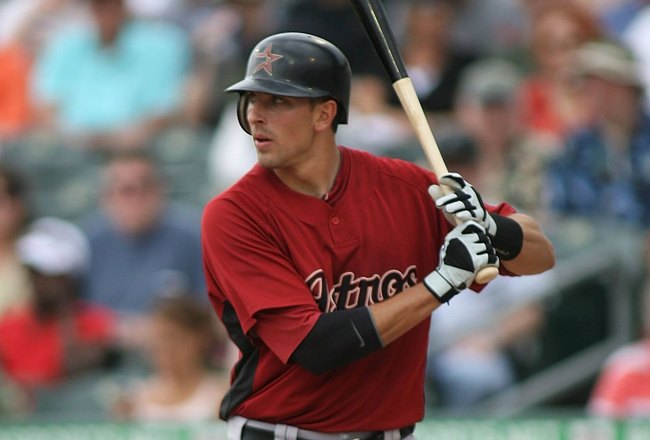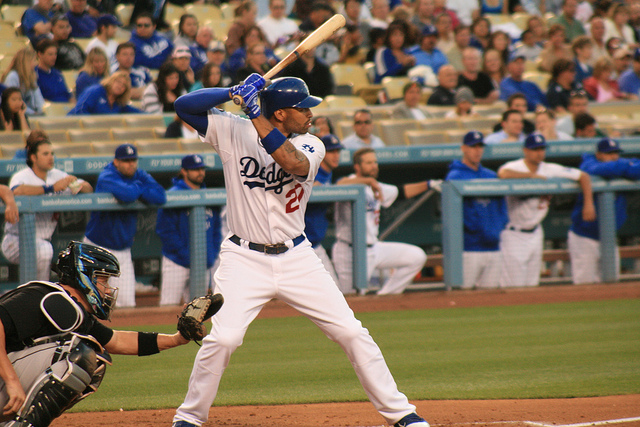A Look Back at the 2013 Draft: AL Catchers

Everyone’s draft has come and gone, but that doesn’t mean the analysis needs to end. In fact, looking back on the drafts this year can give us insight into what the various players in our league were thinking and are thinking about certain players and types of players. I will be breaking down each position here in the front office by league so we can look at a wider range of candidates more closely. We will start with the American League catchers.
When you are scouring the waiver wire, it is important to understand the biases you might be bringing to the conversation. A look back at the draft results provide us a clear picture of those biases. Instead of offering you total run index, I will offer you some similar indicators that will break performance down between quality and quantity. Before we get started, let’s take a look at the statistics we are looking at so that everyone has a full understanding.
[am4show have=’p4;p7;p3;’ guest_error=’Front Office’ user_error=’Front Office’ ]
Batter Runs (Fangraphs)– Batter runs provides us with the perfect marriage of qualitative analysis and quantitative analysis. Both are vitally important. It does this by simply comparing what the player would have created in terms of runs in comparison with the average big league player. Therefore, zero is not bad, but merely average. At some defensive positions (like catcher) zero is actually slightly better than average. At other positions (say first base) it is decidingly below average. Each position will have a median score to provide you with a frame of reference.
Total Average (Baseball Prospectus)– Total average is Baseball Prospectus’ way of breaking down player performance into a single number that looks like batting average. Therefore, it is read the same way that batting average is read (with .260 being average). However, unike batting average it includes other components like OBP and SLG and then distills it to include for differences in home ballpark. It is a purely qualititative statistic.
Runs Created (Baseball Reference)– This stat is purely quantitative. It is important because it tells you how often the player was used in addition to how good he is. Runs created is similar to batter runs in the way it is calculated except it is not compared to average. The formula could easily be manipulated that way, but we use this version as a way to guage a player’s durability in addition to his quality. Obviously, a good number depends on the position. We see full time catchers normally fall in the 60-80 range.
|
Team |
Owned |
Batter Runs |
TAV |
RC |
|
| Joe Mauer |
Twins |
98 |
29.8 |
.304 |
101 |
| Carlos Santana |
Indians |
98 |
14.6 |
.290 |
78 |
| Victor Martinez |
Tigers |
97 |
21.3* |
.297* |
93* |
| Matt Wieters |
Orioles |
96 |
4.2 |
.270 |
74 |
| Mike Napoli |
Red Sox |
91 |
6.9 |
.284 |
58 |
| Salvador Perez |
Royals |
86 |
5.1 |
.274 |
40 |
| Jesus Montero |
Mariners |
86 |
-6.2 |
.253 |
56 |
| A.J. Pierzynski |
Rangers |
77 |
10.7 |
.287 |
78 |
| Ryan Doumit |
Twins |
57 |
6.1 |
.273 |
68 |
| J.P. Arencibia |
Blue Jays |
44 |
-4.6 |
.252 |
42 |
| Alex Avila |
Tigers |
39 |
2.2 |
.260 |
52 |
| Jarrod Saltalamacchia |
Red Sox |
35 |
-2.4 |
.265 |
54 |
| Tyler Flowers |
White Sox |
15 |
-1.8 |
.239 |
17 |
| Chris Iannetta |
Angels |
9 |
2.1 |
.269 |
30 |
| John Jaso |
Athletics |
6 |
18.0 |
.336 |
59 |
| Jason Castro |
Astros |
2 |
0.1 |
.260 |
35 |
| Jose Molina |
Rays |
1 |
-6.2 |
.246 |
24 |
| Derek Norris |
Athletics |
1 |
-7.4 |
.231 |
20 |
| Chris Stewart |
Yankees |
0 |
-6.4 |
.236 |
14 |
| Kelly Shoppach |
Mariners |
0 |
-1.2 |
.261 |
30 |
| Median |
—– |
— |
2.15 |
.267 |
53 |
* Victor Martinez’s numbers represent his 2011 season since he missed all of 2012
There is only one major bias as it pertains to catchers or players at any position for that matter. Wins above replacement (or WAR) has taken the sabermetrical community by storm. Baseball-Reference has a version in addition to Fangraphs. Baseball Prospectus has a similar statistic they call WARP (Wins above replacement player). Bill James started this revolution with Win Shares back in 2001, but the concept of combining a player’s value goes all the way back to the 1980s and the Baseball Encyclopedia (Total Baseball).
I like WAR and it’s various permentations, but we have to remember what we are looking at. We are looking at a rating of the total player. In fantasy baseball, we aren’t concerned with the total player. We are concerned with the offensive player. This makes players like Matt Wieters overrated because much of their WAR is on the defensive end. Sure enough, the percent owned (according toYahoo) records show him to be the fourth rated fantasy catcher in the American League. Yet, he is eighth in batter runs, eighth in total average, and fifth in runs created. He’s durable and solid offensively, but he is not the fourth best catcher in terms of fantasy baseball.
It’s possible that people are buying on spec, but really his numbers for 2012 were down from where they were in 2011. He likely has begun to plateau as an offensive player. Juxtapose that with a player like Ryan Doumit. He has virtually no defensive value and if he were to play in the field he might actually register as worse than a replacement level player. Yet, he can hit as is evidenced by all three of his numbers. They all come in above the median line even though he was ninth in order of draft probability. That means he may be a mere backup in some mixed leagues despite being well above average.
Those of you looking for AL sleepers should focus on the bottom of the list. Jason Castro might have officially been below average last season, but it was also his first year back from an ACL tear. Most medical experts believe it takes a player two years to fully get back from those kinds of injuries. In particular, Castro struggled defensively and so he lost playing time to other catchers that were more proficient. Now that the Astros are playing with the DH, he should get 400 plate appearances. Plus, if his defense improves with increased mobility he could vault that number up to 500 plate appearances. His total average was at the league average mark and should improve with exposure.
John Jaso was certainly playing above his head last year, but I have him in all of my leagues as a backup catcher. Even if you take his career marks in total average and batter runs he turns into an above average offensive catcher overall. Unlike Castro, Jaso will lose some at bats this season because he is not a viable DH candidate like he was in Seattle. The A’s have a surplus of outfielders to go with in those situations. Plus, Derek Norris will likely get 200 to 250 plate appearances this season. Still, he should be good for 400 plate appearances and if Bob Melvin limits his exposure to tough lefties he should continue to be a quality offensive performer.
Finally, you have Chris Iannetta. We saw what he could do on opening day (HR and 3 RBI). His ability as a hitter has never been in doubt. What has been in doubt is his ability to stay healthy. When you’re looking at the waiver wire you are never looking at an ideal candidate. Everyone has warts at this point. His batter runs and TAV are literally at the median of players at the position. You can do a heck of a lot worse and you have the bonus of having him in one of the better lineups in baseball.
[/am4show]





